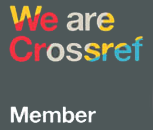Вестник Института экономики № 3/2024. Экономика и управление.
Розанова Надежда Михайловна
доктор экономических наук, профессор, сотрудник кафедры микро- и макроэкономического анализа экономического факультета МГУ имени М.В. Ломоносова, Москва, Россия
ORCID: 0000-0003-3660-0625
СОВРЕМЕННЫЙ ПОТРЕБИТЕЛЬ: В ТЕНЕТАХ ЦИФРОВОЙ ЭКОНОМИКИ
Цифровая экономика создает не только новые возможности, но и порождает определенные риски для потребителей. Исследователи отмечают возникновение эффектов запутывания, с помощью которых цифровые экосистемы осуществляют манипулирование оптимизационным выбором индивида в условиях высоких поисковых трансакционных издержек. Межвременной разброс цен и динамическое ценообразование базируются на использовании невнимательности клиентов и их информационной усталости от многочисленных ценовых колебаний. Периодические снижения цен затрудняют индивидам ценовую ориентацию и служат хорошим стимулом для поддержания картельной дисциплины цифровых платформ. Новые ценовые стратегии запутывания не подпадают под действие текущего антимонопольного законодательства и никак не регулируются.
Ключевые слова: потребитель, цифровая экономика, эффекты запутывания.
УДК: 330.342.24
EDN: CEHRSU
DOI: https://doi.org/10.52180/2073-6487_2024_3_26_46
Литература
- Akerlof G., Shiller R. Phishing for Phools: The Economics of Manipulation and Deception. 2015. Princeton. Princeton University Press.
- Miravete E.J. Competition and the Use of Foggy Pricing // American Economic Journal: Microeconomics. 2013. Vol. 5. No. 1. Pp. 194–216.
- Waddams C., Wilson C. Do Consumers Switch to the Best Supplier? // Oxford Economic Papers. 2010. Vol. 61. Pp. 647–668.
- Ellison G., Ellison S.F. Search, Obfuscation, and Price Elasticities on the Internet // Econometrica. 2009. Vol. 77. No. 2. Pp. 427–452.
- Spiegler R. Bounded Rationality and Industrial Organization. 2014. Oxford. Oxford University Press.
- Grubb M. Behavioral Consumers in Industrial Organization: An Overview // Review of Industrial Organization. 2015. Vol. 47. No. 3. Pp. 247–258.
- Hefti A. Limited Attention, Competition and Welfare // Journal of Economic Theory. 2018. Vol. 178. Pp. 318–359. https://doi.org/10.1016/j.jet.2018.09.012 (accessed 30.04.2024).
- Diamond P. A Model of Price Adjustment // Journal of Economic Theory. 1971. Vol. 3. Pp. 156–168.
- Ellison G. A Model of Add-On Pricing // Quarterly Journal of Economics. 2005. Vol. 120. Pp. 585–637.
- Acemoglu D. Harms of AI. NBER Working Paper 29247. September 2021.
- Chiles E.B.S. Shrouded Information and Strategic Transparency: Three Essays on Price Obfuscation. A Dissertation. Doctor of Philosophy in Management. University of California. Los Angeles. 2017.
- Spiegler R. Competitive Framing // American Economic Journal: Microeconomics. 2014. Vol. 6. No. 3. Pp. 35–58.
- O’Reilly T, Strauss I, Mazzucato M. Algorithmic Attention Rents: A Theory of Digital Platform Market Power // Data & Policy. 2024. No. 6. pp. e6-1-e6-25. DOI: 10.1017/dap.2024.1.
- Lee Y., Han C. Partitioned Pricing in Advertising: Effects on Brand and Retailer Attitudes // Marketing Letters. 2002. Vol. 13. No. 1. Pp. 27–40.
- Ahmetoglu G., Furnham A., Fagan P. Pricing Practices: a Critical Review of Their Effects on Consumer Perceptions and Behaviour // Journal of Retailing and Consumer Services. 2014. Vol. 21. No. 5. Pp. 686–707.
- Ayres I., Nalebuff B. In Praise of Honest Pricing // MIT Sloan Management Review. 2003. Vol. 45. No. 1. Pp. 23–28.
- Baye M.R., Morgan J. Search Costs, Hassle Costs, and Drip Pricing: Equilibria with Rational Consumers and Firms. University of California, Berkeley. March 2019.
- Rhodes A. A Survey on Drip Pricing and Other False Advertising. Working paper N1434. May 2023. Toulouse School of Economics.
- Gabaix X., Laibson D. Shrouded Attributes, Consumer Myopia, and Information Suppression in Competitive Markets // Quarterly Journal of Economics. 2006. Vol. 121. No. 2. Pp. 505–540.
- Ellison G., Wolitzky A. A Search Cost Model of Obfuscation // The RAND Journal of Economics. 2012. Vol. 43. Pp. 417–441.
- Hagiu A., Jullien B. Why do Intermediaries Divert Search? // The RAND Journal of Economics. 2011. Vol. 42. No. 2. Pp. 337–362.
- White A. Search Engines: Left Side Quality Versus Right Side Profits // International Journal of Industrial Organization. 2013. Vol. 31. No. 6. Pp. 690–701.
- Spiegler R. Competition over Agents with Boundedly Rational Expectations // Theoretical Economics. 2006. Vol. 1. Pp. 207–231.
- Gabaix X., Laibson D. Shrouded Attributes, Consumer Myopia and Information Suppression in Competitive Markets // NBER Working Paper 11755. November 2005.
- Greenleaf E., Johson E., Morwitz V., Shalev E. The price does not Include Additional Taxes, Fees, and Surcharges: A Review of Research on Partitioned Pricing // Journal of Consumer Psychology. 2016. Vol. 26. No. 1. Pp. 105–124.
- Koulayev S. Search for Differentiated Products: Identification and Estimation // The RAND Journal of Economics. 2014. Vol. 45. No. 3. Pp. 553–575.
- McDonald S., Wren C. Multiple Price Posting and Consumer Search Obfuscation: Evidence from an Online Market // Working paper. Conference Name: 40th EARIE Annual Conference. 2013. Pp. 1–25.
- Armstrong M., Vickers J., Zhou J. Prominence and Consumer Search // The RAND Journal of Economics. 2009. Vol. 40. No. 2. Pp. 209–234.
- Song H. Orders Search with Asymmetric Product Design // Journal of Economics. 2017. Vol. 121. Pp. 105–132.
- Carlin B. Strategic Price Complexity in Retail Financial Markets // Journal of Financial Economics. 2009. Vol. 91. No. 3. Pp. 278–287.
- Chioveanu I., Zhou J. Price Competition with Consumer Confusion // Management Science. 2013. Vol. 59. No. 11. Pp. 2450–2469.
- Schofield A. Personalized Pricing in the Digital Era // Competition Law Journal. 2019. Vol. 18. No. 1. Pp. 35–44.
- Bourreau M., Streel A. The Regulation of Personalised Pricing in the Digital Era // SSRN Electronic Journal. 2018. No. 150. DOI: 10.2139/ssrn.3312158.
- Gu Y., Wenzel T. Strategic Obfuscation and Consumer Protection Policy // Journal of Industrial Economics. 2014. Vol. 62. No. 4. Pp. 632–660.
- Fainmesser I., Galeotti A. Pricing Network Effects // American Economic Journal: Microeconomics. 2020. Vol. 12. No. 3. Pp. 1–32.
- Mayzlin D., Dover Y., Chevalier J. Promotional Reviews: An Empirical Investigation of Online Review Manipulation // The American Economic Review. 2014. Vol. 104. No. 8. Pp. 2421–2455.
- Luca M., Zervas G. Fake it Till You Make it: Reputation, Competition, and Yelp Review Fraud // Management Science. 2016. Vol. 62. No. 12. Pp. 3412–3427.
- Gu Y., Wenzel T. Consumer Confusion, Obfuscation, and Price Regulation // Scottish Journal of Political Economy. 2017. Vol. 64. No. 2. Pp. 169–190.
- Chioveanu I., Zhou J. Price Competition with Consumer Confusion // Management Science. 2013. Vol. 59. No. 11. Pp. 2450–2469.
- Heidhues P., Johnen J., Koszegi B. Browsing Versus Studying: a Pro-Market Case for Regulation // The Review of Economic Studies. 2021. Vol. 88. No. 2. Pp. 708–729.
- De Los Santos B. Consumer Search on the Internet // International Journal of Industrial Organization. 2018. Vol. 58. Pp. 66–105.
- Seller S. The Impact of Search Costs on Consumer Behavior. A Dynamic Approach // Quantitative Marketing and Economics. 2013. Vol. 11. No. 2. Pp. 155–203.
- Hamalainen S. Multiproduct Search Obfuscation // International Journal of Industrial Organization. 2022. Vol. 85(C). No. 102863. DOI: 10.1016/j.ijindorg.2022.102863.
- Fehr E., Wu K. Obfuscation in Competitive Markets // Working Paper No. 391. 2021. University of Zurich, Department of Economics.
- Kalayci K., Potters J. Buyer Confusion and Market Prices // International Journal of Industrial Organization. 2011. Vol. 29. Pp. 14–22.
- Heim S. Rockets and Feathers: Asymmetric Pricing and Consumer Search – Evidence from Electricity Retailing // ZEW – Centre for European Economic Research. Discussion Paper No. 16–070. 2019. Zentrum für Europäische Wirtschaftsforschung (ZEW). Mannheim.
- Carlin B. Strategic Price complexity in Retail Financial Markets // Journal of Financial Economics. 2009. Vol. 91. Pp. 278–287.
- Armstrong M. Economic Models of Consumer Protection Policies. In The Pros and Cons of Consumer Protection. Swedish Competition Authority. 2012. Pp. 123–147.
- Armstrong M., Vichers J., Zhou J. Consumer Protection and the Incentive to Become Informed // Journal of the European Economic Association. Vol. 7. No. 2–3. Pp. 399–410.
Дата поступления рукописи: 14.05.2024 г.
Для цитирования:
Розанова Н.М. Современный потребитель: в тенетах цифровой экономики // Вестник Института экономики Российской академии наук. 2024. № 3. С. 26-46. https://doi.org/10.52180/2073-6487_2024_3_26_46 EDN: CEHRSU



 26-46
26-46  930
930  334.27 KB
334.27 KB 






